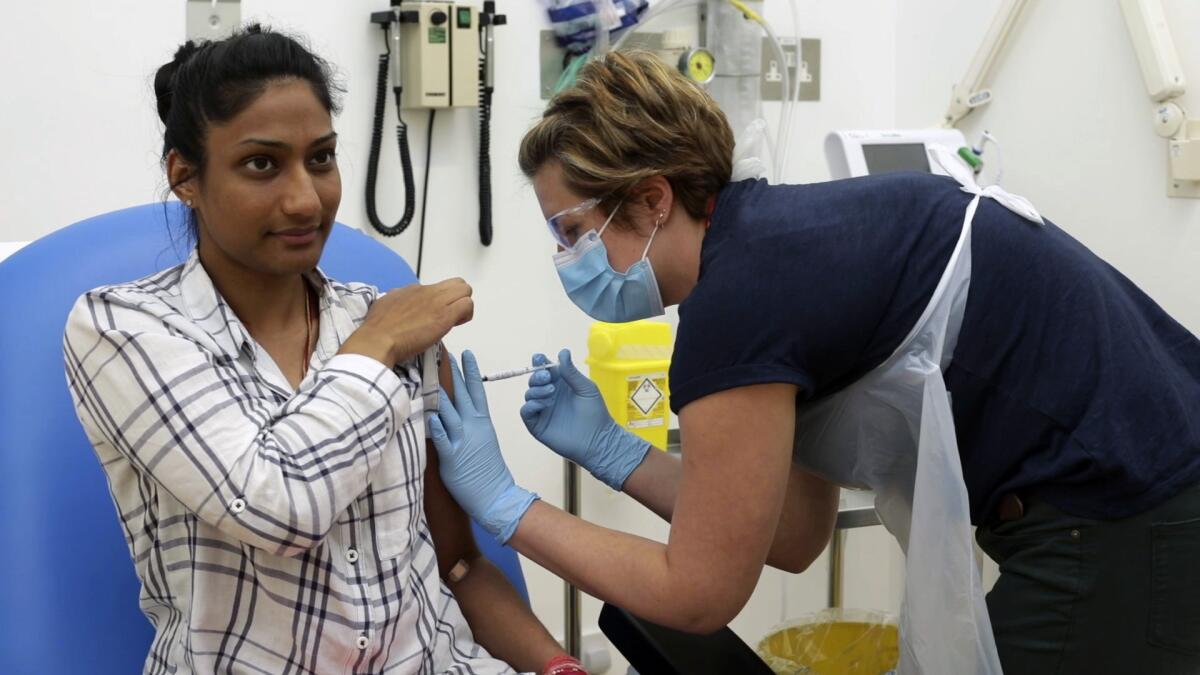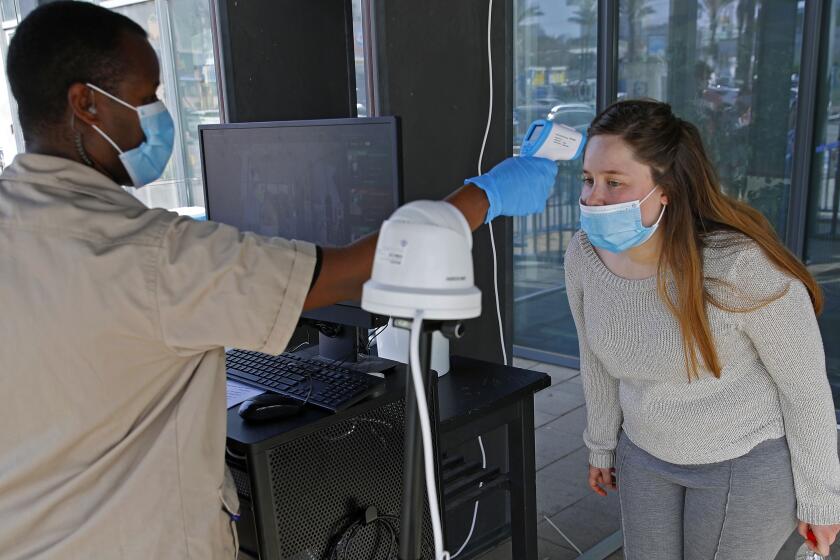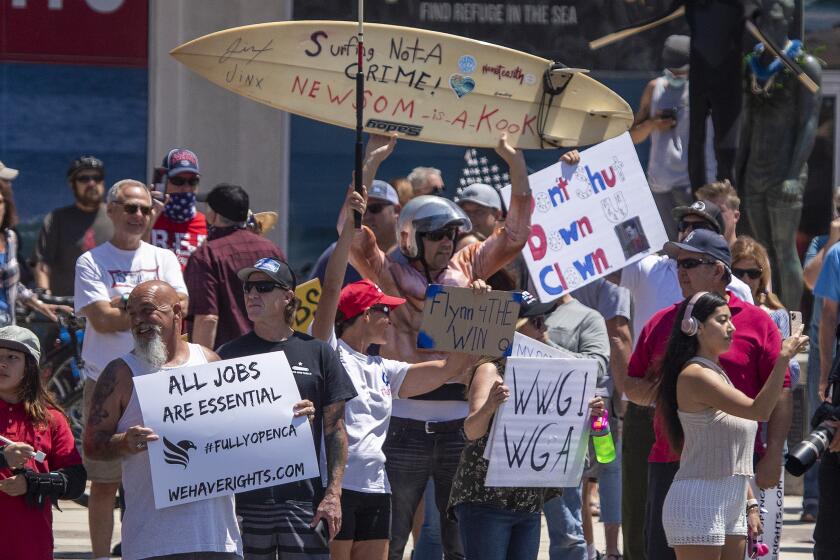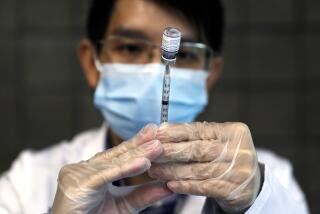Hunt for a coronavirus vaccine heats up, but there’s no guarantee of success

Hundreds of volunteers around the world are rolling up their sleeves to be injected with experimental COVID-19 vaccines in the hope that at least one of them will work and bring the coronavirus outbreak under control.
About 100 research groups are pursuing vaccines, with nearly a dozen in early-stage human trials or poised to start. None of them are guaranteed to work, but scientists say the crowded field only increases the odds that a few might overcome the many obstacles that remain.
“We’re not really in a competition against each other,” said Dr. Andrew Pollard, who is leading a vaccine study at Oxford University. “We’re in a race against a pandemic virus, and we really need as many players in that race as possible.”
There’s no way to predict which vaccine — if any — will work safely, or even to name a front-runner.
As Dr. Anthony Fauci, head of the National Institute of Allergy and Infectious Diseases, put it: “You need more shots on goal for a chance at getting a safe and effective vaccine.”
The first cautious tests of March, when small numbers of volunteers got injections to check for side effects, have turned into larger studies in China, the U.S. and Europe to look for hints that different vaccine candidates really protect.
The next task is to find whether any of the vaccines work in the real world by testing large groups of people in areas where the virus is circulating and finding a way to quickly distribute lots of doses of any candidate that works.
Policymakers are devising plans to overcome both obstacles in an attempt to compress the years it usually takes to develop a vaccine. Asked if it was possible to have a vaccine by January, Dr. Deborah Birx, the White House coronavirus task force coordinator, told Fox News Sunday, “On paper, it’s possible. It’s whether we can execute.”
Fauci has cautioned that even if everything goes perfectly, developing a vaccine in 12 to 18 months would set a speed record. January will mark a year since the National Institutes of Health began creating its own COVID-19 vaccine, which is now in trials with Moderna Inc.
Creating a vaccine capable of preventing the coronavirus that causes COVID-19 will take many months — if not a year or more. These are the steps involved.
Depending how you count them, there are between eight and 11 vaccine candidates in early stages of testing in the U.S., China, Britain and Germany; Pfizer Inc. and BioNTech began a study last week that’s simultaneously testing four somewhat different shots. More study sites are about to open in other countries, and by July, another handful of vaccines is set to begin first-in-human testing.
There’s no shortage of volunteers.
“This allows me to play a small role in fighting this thing,” said Anthony Campisi, a 33-year-old Philadelphia resident who received his first test dose of Inovio Pharmaceuticals’ DNA-based vaccine last month. “I can be a guinea pig.”
The initial vaccine candidates work in a variety of ways. Each type of vaccine works better in some virus families than in others. But for coronaviruses, there’s no blueprint.
Back in 2003, when scientists attempted to create vaccines against SARS, the outbreak ended before a shot was developed. Vaccine funding dried up, and work stopped. Vaccines against MERS have only reached first-step safety testing. Both diseases are caused by coronaviruses.
“In 20/20 hindsight, we should have worked harder on coronavirus vaccines back then,” said Dr. Sten Vermund, dean of the Yale School of Public Health. Now, “we’re obligated to try a variety of strategies if we want fast results.”

China’s Sinovac and SinoPharm are testing “inactivated” vaccines, which are made by growing the new coronavirus and killing it. The companies have revealed little information about their shots, but the technology is tried-and-true — polio shots and some types of flu vaccine are inactivated virus. One downside is that it’s hard to scale up to rapidly produce millions of doses.
Most other vaccines in the pipeline aim to train the immune system to recognize a piece of the new coronavirus — mostly, the spiky protein that studs its outer surface.
One way approach is to use a harmless virus to carry the spike protein into the body. It’s easier to produce, but determining which virus is the best carrier is a key question.
China’s CanSino Biologics brewed its vaccine using an adenovirus that causes a common cold but was engineered so that it won’t spread in the body. Pollard’s Oxford team chose an adenovirus that normally infects chimpanzees, in case a human adenovirus would be attacked by a volunteer’s immune system before the vaccine could do its job.
Another option is to inject people with a piece of the coronavirus genetic code that instructs the body to produce the spike protein, thereby priming the immune system to attack. It’s a new and unproven technology, but it promises even faster production. Vaccines made by the NIH and Moderna, Inovio Pharmaceuticals, and the Pfizer-BioNtech collaboration use genetic approaches.
Still more methods are next in line, including a vaccine made of spike protein nanoparticles, and a nasal spray alternative to shots.
Israeli scientists say they can mimic the effects of a vaccination campaign if certain people willingly get infected with the coronavirus and recover.
Most vaccine studies so far are focused on safety and whether volunteers’ blood shows any immune reactions. Some trials have jumped to larger numbers quickly, but that’s still a long way from being able to prove real-world protection.
If study participants are holed up at home or live in areas where the coronavirus is no longer spreading rapidly, then researchers could be faced with the problem of having too few volunteers who are sick. That would be bad because scientists wouldn’t be able to tell if the vaccine or other factors like social distancing practices were responsible for keeping volunteers healthy.
“When you’re chasing a pandemic, the place that looks like the right one to go to today will be the wrong place two weeks from now,” Pollard said. “That that makes it really difficult.”
In the U.S., some lawmakers have urged a controversial experiment: Recruit young, healthy volunteers who agree to be deliberately infected with the new coronavirus in order to test a vaccine’s effectiveness. But some healthy adults have died from COVID-19, and until doctors better understand why, this kind of “challenge study” makes for a risky proposition with serious ethical questions, Vermund said.
Last week, the World Health Organization asked countries to offer to serve as test sites for an international project that could speed up the development timeline by deploying promising vaccine candidates in locations where COVID-19 remains widespread.
In the U.S., the Trump administration is planning its own project dubbed Operation Warp Speed that will overlap studies of “different candidates that are made differently and act differently,” Birx said.
Yes, there are significant health risks associated with lockdown. But returning to normal life too soon and rushing herd immunity would be even worse.
Whenever the first useful vaccine is identified, there won’t be enough of it for everyone. So a growing number of vaccine makers say they’re already starting to brew tons of doses — a decision that will wind up wasting millions of dollars if they bet on the wrong candidate, but will shave a few months off mass vaccinations if their choice pans out.
“We need to start building new manufacturing sites now,” said Wellcome Trust vaccine chief Charlie Weller. “And we need to accept that some of these sites will be created for vaccines that will ultimately fail.”
The U.S. government already has deals with Moderna and Johnson & Johnson that together total nearly $1 billion.
“The critical thing at the beginning is just to make as much stuff as we can,” said Dr. Richard Hatchett, chief executive of the Coalition for Epidemic Preparedness Innovations, which is funding several COVID-19 vaccine attempts around the world.
Even if one of them works, expect rationing early on until there’s enough for everyone in rich and poor countries alike. Policymakers will have to determine who needs the first doses the most — possibly health workers, or senior citizens.
“I am concerned about what I call vaccine nationalism. That’s the tension between obligations elected leaders will feel to protect the lives of their citizens” versus the imperative for equitable global sharing, Hatchett said.
And with billions who’ll need to be vaccinated, just one winner in this race won’t cut it.
“It’s not likely that one manufacturer or one candidate vaccine is going to be able to deal with the global need and supply that need,” Pollard said.








